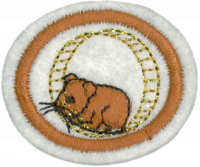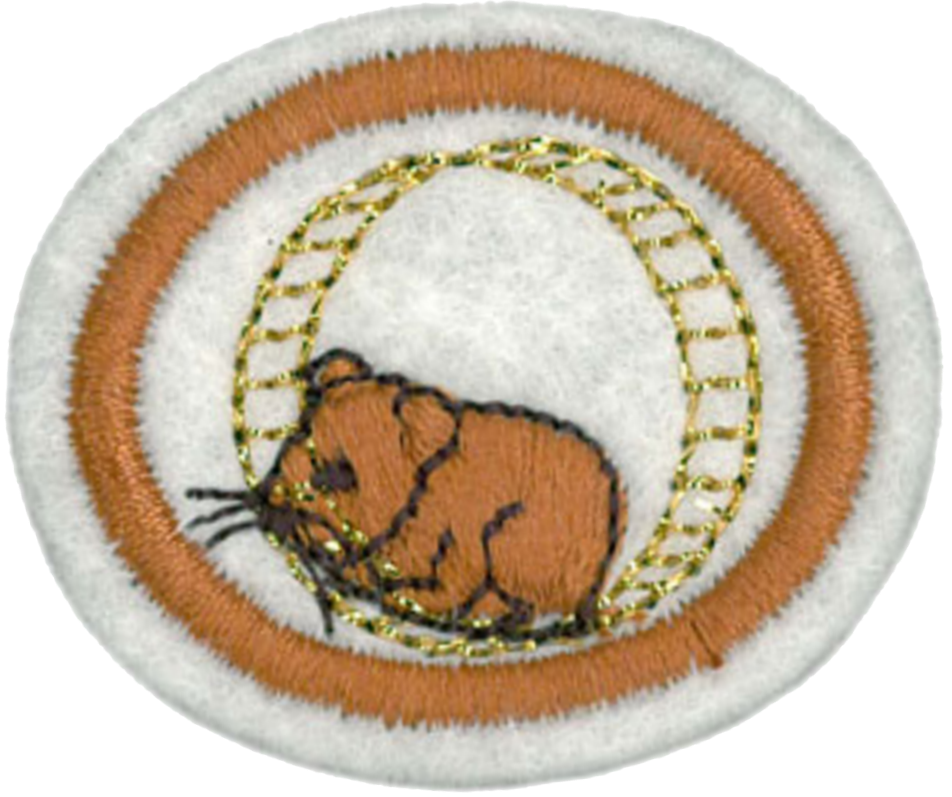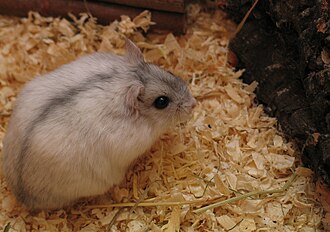Especialidades JA/Mamíferos pequeños como mascotas
Nivel de destreza
2
Año
1997
Version
01.12.2025
Autoridad de aprobación
Asociación General
1
Para consejos e instrucciones, véase Mamíferos.
2
Keeping a pet represents a tremendous commitment on the part of the owner. Pets rely on their owners for their most basic needs, and if the owner is neglectful, or "just doesn't feel like" taking care of the animal, it will suffer. Some small mammal pets have a lifespan of only a couple of years, which is fairly short as compared to other pets. Because of the limited lifespan, a small mammal as a first pet would be a good choice for a parent to test a child's commitment. However, that should not relieve a child (or any pet owner) of responsibly caring for the animal.
3
- a. Si actualmente dispone de un mamífero pequeño como mascota, mantener un registro de la atención de su mamífero pequeño durante un mes. Incluir en el expediente cuando le da agua, alimento y cuando limpia su jaula.
- b. Si actualmente no dispone de un mamífero pequeño como mascota, pero ha mantenido una durante al menos seis meses, cuidar para alguien uno durante al menos una semana. Registrar la atención que fue requerida.
4
This report could be given during Sabbath School, during club worship, or told as a children's story during church. It can also be given to your unit during a club meeting. Use the records kept in the previous requirement to help you prepare. Three minutes is not a very long report, so do not let that make you nervous. Once you start talking about your pet, the three minutes will pass before yo uknow it.
5
5a
i
ii
iii
iv
v
vi
vii
viii
5b
5c
6
Go to the library an check out a book on the pet you are interested. You can also read an encyclopedia article about the animal:
Once you know some interesting facts, put them in writing. Use your own words. Two-hundred words will easily fit on a half page of letter-size paper.
7
Hamsters
Winter White Russian Dwarf Hamster
They are very small, measuring only slightly over three inches and weighing less than an ounce.
Because of their small size, Polish rabbits need less space in cage and barn facilities, and take up less space in apartments than some of the larger bunnies. As with other small breed rabbits, they tend to be higher strung than their larger counterparts. They are also not ideal pets for small children as they are easily dropped, injured and stepped on. Their high-strung nature makes them more suited for a mature, rabbit-loving, adult home. However, the polish rabbit is not usually mean. Bucks are little clowns and are extremely fast if you let it loose good luck catching it, but they generally calm down at about two years of age. Does tend to be reserved in personality.
8
- Diet
- Wild animals do not eat the same foods as humans or domestic animals. It may not be possible for you to feed them what they need. If they do not get proper nutrition, they will not remain healthy.
- Legal Concerns
- It is illegal to keep wild pets in many localities. If you capture a wild animal and try to keep it as a pet, you may very well be breaking the law.
- Not Abandoned
- When people find baby animals that are apparently abandoned and attempt a "rescue," they are usually only interfering with the animal's life. In the vast majority of cases, the mother is nearby, and will return to it. Taking the baby animal in no way rescues it at all.
- Releasing
- Many people believe that when they get tired of their wild pet, they can merely release it back into the wild. However, if the animal was in captivity from youth, it will not have learned any survival skills, making this move a death sentence for the animal. Further, the animal's diet will necessarily have to change which will cause digestive problems. Remember, wild animals and domestic animals do not eat the same foods. This animal will have undergone two major dietary shifts - the first when it was captured, and the second when it was released.
- Proper Care is Nearly Impossible
- It is nearly impossible to meet all the requirements a wild animal needs for survival. Many wild animals require specialized care in facilities staffed by highly trained professionals. A wild animal will almost never develop affection for its owner, and because it is wild, can turn on its keeper in an instant, causing serious injury, or possibly even death.
- Babies Grow Up
- Baby animals grow up. They are not usually as cute when they are fully grown, and most people greatly underestimate the strength of an adult wild animal. Given the change, it can easily overpower a human being. As they grow, their appetites grow too, and can often be accurately described as voracious. An adult wild animal can eat you out of house and home!
- Disease
- According to the Humane Society of the United States:
- The Centers for Disease Control and Prevention (CDC) discourages direct contact with wild animals for a simple reason: They can carry diseases that are dangerous to people, such as rabies, herpes B virus, and Salmonella. - http://www.hsus.org
9
Rabies is a viral disease that causes inflammation of the brain (encephalitis). If untreated, it is always fatal.
All mammals can carry rabies, and this includes small mammal pets.
10
Guinea pigs, rats, and mice are used extensively in medical research because they are susceptible to many of the same diseases and virus as humans. Having a cold means you are infected with a Rhinovirus, a virus that can make all of these animals sick. When you have a cold, you can easily spread germs to others (that's probably how you caught the cold in the first place), whether they are human, or animal. Do your family, friends, and pets a favor, and wash your hands frequently, especially if a cold is going around or if you have one yourself. And if you do have one, stay away from small mammal pets!
11
Three references can be found in these two verses.
The rabbit, though it chews the cud, does not have a split hoof; it is unclean for you.
"'Of the animals that move about on the ground, these are unclean for you: the weasel, the rat, any kind of great lizard, the gecko, the monitor lizard, the wall lizard, the skink and the chameleon."
References
- Humane Society of the United States - Hamster care
- http://www.twinsqueaks.com/guide.php - Gerbil care
- http://www.altpet.net/rodents/rats/ratfaq.html
External Links
- http://www.ferretcare.org/
- Ferret Information - Ferret care
- Ferret Care



